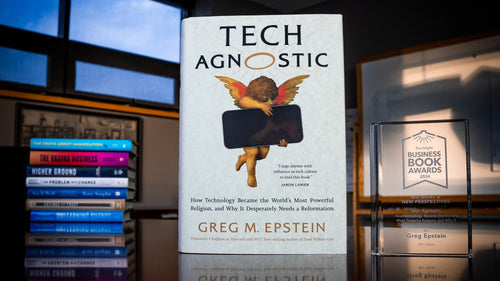Friend of a Friend . . .: Understanding the Hidden Networks That Can Transform Your Life and Your Career

The world has become one big public networking scoreboard: 16.5K followers on Twitter. 5,000 friends on Facebook. 700+ connections on LinkedIn. We are living in a time that tells us the higher the numbers, the better our chance at success. If we just pull ourselves out of bed for that early morning business association meet-and-greet, we'll meet the next client that will shore up the bottom line. If we drag ourselves to the bar after work to share a beer with strangers that do our same job, it's possible we'll find a position at a new company. Maybe. Nobody wants to do these things, but we are made to feel that we must. But what if everything we know about networking is wrong? What if you already know all of the right people to further your own success? David Burkus's new book, Friend of a Friend . . .: Understanding the Hidden Networks That Can Transform Your Life and Your Career, introduces us to some new thinking on what successful networking can look like. Think of it as "Networking for People Who Only Want to Talk to Their Friends. And Friends of Their Friends."
Introduction
Or
How I Learned to Stop Networking
And Love Network Science
In 1999, a young computer engineer and aspiring entrepreneur named Adam Rifkin was looking for advice on his next move. In gathering advice, Rifkin sent an unsolicited email to a man he had never met in person named Graham Spencer. At the time, Spencer was one of the hottest names in the Silicon Valley tech community, having just completed the sale of his last start-up, Excite.com.
Although Excite.com is still active, it’s easy to forgive anyone who doesn’t immediately recognize the name. In the age before Google and Facebook, however, Excite was one of the biggest brands on the Internet. Started in 1993 by Spencer and five of his friends, Excite had grown to become the front page of the Internet for a significant percentage of web-surfers. (This was back when people still used that term seriously.) Spencer and the Excite team had grown the website from a humble start-up to a vast collection of websites. They had some financial struggles, but the success of the website in drawing users eventually led them to a major payout. In early 1999, Excite was sold to the telecommunications company @Home for $6.7 billion. Needless to say, once the deal was finalized, Spencer was getting a lot of attention.
That Rifkin sent a cold email hoping for some advice from a Silicon Valley success story isn’t unusual; who wouldn’t at least try? What is unusual is that Spencer agreed to the request. Not only did Spencer volunteer to meet with Rifkin in person and answer any questions Rifkin had, but he went above and beyond that. Once Rifkin had explained his idea, Spencer connected Rifkin to a venture capitalist who became one of the first funders of the new start-up.
The overriding question is why, at the height of his popularity, and at the peak of the demand for his time, did Spencer agree to sit down with someone he had never met in person? Because five years earlier, Rifkin and Spencer had built a webpage about punk rock bands.
More specifically, in 1994, as Rifkin was beginning his studies in computer science, he built a fan website dedicated to the emerging punk rock band Green Day. Despite it being the early days of the Internet, the website took off quickly. In fact, the website was getting so much attention that members of Green Day asked if they could take it over from Rifkin and make it their official website. Rifkin said yes. But Rifkin also received another request, from a young Graham Spencer, who felt that labeling Green Day as “punk rock” was taking attention away from “real” punk bands. So Rifkin and Spencer worked together and built a page on the Green Day website that listed other, lesser known bands. “A completely random set of events that happened in 1994 led to re-engaging with him over e-mails in 1999,” Rifkin said. “Which led to my company getting founded in 2000.” Rifkin had helped Spencer, even though he could have ignored the request. Five years later, Spencer in turn helped Rifkin even though he too could have ignored the request.
While this story might seem exceptional, it’s actually not that uncommon an occurrence for Rifkin. His career has been full of incidents of helping individuals who either were or would go on to be well-known figures in technology and business. Like the time Rifkin gave some contract work over to a young Ev Williams so he could keep afloat with a start-up called Blogger — which he later sold to Google for an undisclosed sum (though rumors estimate tens of millions). Williams would go on to start the company that would become Twitter. Or like the time Rifkin was starting another company and needed office space, and Reid Hoffman offered to let his team crash at LinkedIn until they got on their feet.
Rifkin’s story is filled with amazing anecdotes. He may not be a well-known name to everyone, but to the right people in his industry, he’s more than well known. He’s the best networker in the world. Literally. In 2011, Fortune magazine named Rifkin “the world’s best networker” — since it turned out that he was more connected than anyone else to the most influential people on Fortune’s lists (Fortune 500, 40 Under 40, 50 Most Power Women, etc.).
What is surprising about Rifkin earning this title isn’t just that he is not the household name we would expect, but also that he doesn’t fit the image of the world’s best networker. He is not a tall, extroverted, dapper, energetic, eloquent, highly educated professional. “I am not an extrovert,” he has said frequently. “Meeting people is not my favorite thing.” He describes himself as a little shy and awkward. He prefers a T-shirt and hoodie to a suit and tie. His look is often compared to a panda bear (a comparison he wears fairly proudly). He’d rather reconnect with old friends than work a room full of new people.
What Rifkin does have is an understanding of how networks work. Much of his initial strategy for building relationships and making connections wasn’t gleaned from an advice book about being a power networker. It came from his graduate school work in computer science. “I feel fortunate to have learned networking from many excellent teachers,” Rifkin once said. “And the greatest of these teachers was actually the Internet itself.” To Rifkin, human networks follow similar principles to computer networks. And studying those networks taught him several lessons about how to build and utilize better human networks. While we might think of our network as a collection of contact cards in a rolodex (or more modernly, a collection of names in a contacts app), when Rifkin thought about networks, he saw them not as a collection of contacts but as the map of the connections between contacts. “A network is basically a set of people and the connections between those people,” he explained.
One lesson in particular was that computer networks grow in value as the number of nodes and the number of connections grow. (A similar lesson from network science, often referred to as Metcalfe’s Law, is a mathematical expression of this idea.) “If you go about it the right way, then it’s good for everyone,” Rifkin explained. “If you go about it the wrong way, then it cuts off opportunities, not just for yourself but for others too.” So Rifkin committed himself to making introductions every single day. Eventually, he learned to scale his network building by building a whole community, 106 Miles, dedicated to keeping the tech community well connected. Today 106 Miles has almost 10,000 members who interact regularly. It’s a network unto itself. Although Rifkin isn’t at the center of it anymore, it owes its existence to his perspective on networks and networking.
Rifkin’s own extensive network, and the career success it has brought him, is more than an amazing story. It’s a stern rejection of many of the misconceptions about what networking is and how it’s supposed to work. One reason these misconceptions are widespread is that the majority of books, workshops, courses, speeches, and more on the subject are based on old and misguided advice. Specifically:
- They say you should write and refine your “elevator pitch.”
- They say you should never eat a meal alone.
- They say that you should repeat someone’s name three times in the first few seconds of conversation (sometimes as advice for remembering the name, other times as a trick to get people to like you more).
- They will offer guidelines on how to work a room or how to meet new connections online.
But all advice is autobiographical. Advice, even advice about networks, represents little more than one person’s single story projected onto others. Advice, at its core, says, “I did this and it worked, so you should do it too,” or the slightly more convincing, “I wasn’t doing this, but then I did and it changed my life.” As well meaning, inspirational, and accurate as another person’s autobiography might be, it’s still one person, with one specific set of skills, one personality, in one specific location, at one specific time. So what if you’re not that person with that personality at that point in life? What if you’re not the tall, extroverted, dapper, energetic, eloquent, highly educated professional who’s giving you the advice? Would it still work for you? Would you even want to try it?
Excerpted from Friend of Friend…: Understanding the Hidden Networks That Can Transform Your Life and Career by David Burkus.
Copyright © 2018 by David Burkus.
Reprinted by permission of Houghton Mifflin Harcourt Publishing Company.
All rights reserved
ABOUT THE AUTHOR
David Burkus is a best-selling author, a sought-after speaker, and a business school professor. A regular contributor to the Harvard Business Review, he has delivered keynotes to Fortune 500 companies and his TED Talk has been viewed over 1.8 million times. He lives with his family near Tulsa.



